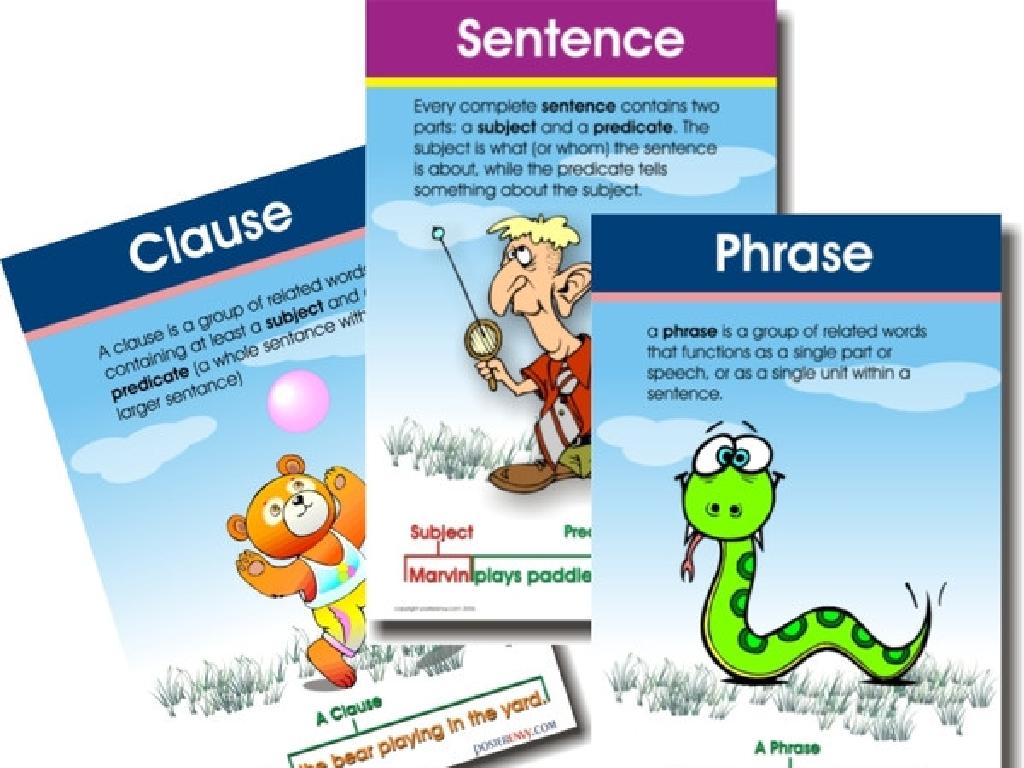The Constitution: Amendments
Subject: Social studies
Grade: Eighth grade
Topic: The Constitution
Please LOG IN to download the presentation. Access is available to registered users only.
View More Content
Introduction to the Constitution: Our Living Laws
– Foundation of U.S. laws
– Constitution: Supreme law overview
– The Constitution sets the framework for federal law and government operations.
– Constitution’s living nature
– It’s termed ‘living’ because it can be amended to reflect societal changes.
– Amendments’ role in adaptability
– Amendments allow the Constitution to evolve with time and culture.
|
This slide introduces students to the Constitution as the bedrock of all United States laws and the supreme law of the land. It outlines the Constitution’s role in governing the country and its unique ability to adapt to changing times through amendments. Emphasize the importance of the Constitution being a ‘living document,’ which means it is not static but can be updated to address new issues and reflect the evolving values of society. The amendment process is crucial for this adaptability, allowing the Constitution to remain relevant. Encourage students to think about why it’s important for laws to evolve and how the Constitution’s ability to change helps protect the rights of all citizens.
Understanding Constitutional Amendments
– Define an amendment
– An amendment is a formal change to the Constitution.
– Purpose of amendments
– They allow the Constitution to evolve with society’s needs.
– Explore the Bill of Rights
– The first 10 amendments, known as the Bill of Rights, protect individual freedoms.
– Amendments ensure democracy
– Regular amendments help adapt the governing document to current values and norms.
|
This slide introduces the concept of amendments within the context of the U.S. Constitution. An amendment is a formal change or addition proposed and ratified according to the Constitution’s guidelines. The purpose of amendments is to allow for the Constitution to be a living document, one that can be updated to reflect the changing values and norms of society. The Bill of Rights, the collective name for the first ten amendments, is introduced as a critical component of the Constitution that guarantees fundamental rights and liberties. Emphasize the importance of amendments in maintaining a democratic system that can respond to the citizens’ evolving needs and protect individual rights against government overreach.
The Amendment Process
– Steps to propose an amendment
– Proposal by 2/3 vote in Congress or by a convention called for by 2/3 of state legislatures.
– Ratification of amendments
– Ratification by 3/4 of state legislatures or conventions in 3/4 of the states.
– Congress and states’ roles
– Congress proposes amendments; states confirm or reject them.
– Examples of amendments
– 27 successful amendments; Equal Rights Amendment remains unratified.
|
This slide aims to explain the complex process of how amendments to the U.S. Constitution are made. It’s crucial to highlight the significant role both the federal and state levels play in this process. Emphasize the collaborative effort between Congress and the states, where Congress proposes amendments and the states have the power to ratify them, making the changes official. Provide historical context by discussing examples like the 19th Amendment, which granted women the right to vote, as a successful amendment, and contrast it with the Equal Rights Amendment, which has not been ratified. This will give students a clear understanding of the amendment process and its impact on American law and society.
Significant Amendments to the U.S. Constitution
– 13th Amendment: Ends slavery
– Abolished slavery in 1865, after the Civil War
– 19th Amendment: Women’s right to vote
– Granted women the right to vote in 1920, a major step for gender equality
– 26th Amendment: Voting age to 18
– Lowered the voting age from 21 to 18 in 1971, during the Vietnam War
|
This slide highlights three significant amendments to the U.S. Constitution, each marking a pivotal moment in American history. The 13th Amendment, ratified in 1865, officially abolished slavery and was a cornerstone of the Reconstruction era. The 19th Amendment, passed in 1920, was the culmination of the women’s suffrage movement and expanded democracy to include women. The 26th Amendment, ratified in 1971, was influenced by the Vietnam War and the argument that if 18-year-olds could be drafted, they should also be able to vote. These amendments reflect the evolving nature of American society and its values. Encourage students to discuss the historical context of each amendment and its impact on contemporary society.
Case Study: The 19th Amendment
– Women’s suffrage movement
– The long fight for women’s right to vote
– Key figures in the movement
– Susan B. Anthony, Elizabeth Cady Stanton’s roles
– 19th Amendment’s societal impact
– Expanded democracy, influenced social change
– Understanding the amendment’s legacy
– How it continues to inspire equality movements
|
This slide delves into the 19th Amendment, which granted women the right to vote. It’s crucial to discuss the historical context of the women’s suffrage movement, highlighting the perseverance and struggle faced by women over decades. Emphasize the key figures like Susan B. Anthony and Elizabeth Cady Stanton, who played pivotal roles in advocating for women’s rights. Discuss the profound impact the amendment had on society, not only by expanding democratic participation but also by paving the way for subsequent civil rights movements. Encourage students to reflect on the legacy of the 19th Amendment and its relevance to ongoing discussions about equality and justice in society.
The Importance of Amendments
– Amendments shape American society
– Amendments like the 19th (women’s suffrage) transformed society
– They protect individual rights
– The 1st Amendment ensures freedoms like speech and religion
– Reflect changing societal values
– The 13th, 14th, and 15th Amendments evolved with societal changes
– Amendments as living documents
|
This slide aims to highlight the significance of constitutional amendments in shaping American society and governance. Amendments are crucial as they have the power to refine, update, and improve the Constitution. They have been instrumental in extending rights and protections to various groups, exemplified by the 19th Amendment, which granted women the right to vote. The protection of individual rights is another cornerstone of the amendments, with the 1st Amendment safeguarding fundamental freedoms. Additionally, amendments often reflect the changing values and norms of society, as seen with the abolition of slavery and the establishment of civil rights. It’s essential to discuss how these changes are indicative of the Constitution’s ability to adapt over time, ensuring its relevance and effectiveness in governing a modern nation. Encourage students to think about what current societal values might prompt future amendments.
Class Activity: Drafting an Amendment
– Form groups to discuss issues
– Draft a proposed amendment
– Create an amendment text addressing the chosen issue
– Consider societal impact
– Reflect on how the amendment could affect everyday life
– Prepare for class presentation
|
This activity encourages students to engage with the amendment process by identifying current issues and creating their own amendments. Divide the class into small groups and have them choose an issue they feel passionate about. Each group will draft an amendment text, considering the wording and implications. They should discuss how their amendment would impact society, including potential benefits and drawbacks. Finally, each group will prepare a short presentation to share their proposed amendment and the reasoning behind it with the class. This exercise will help students understand the complexity of amending the Constitution and the importance of considering the broader effects of such changes.






